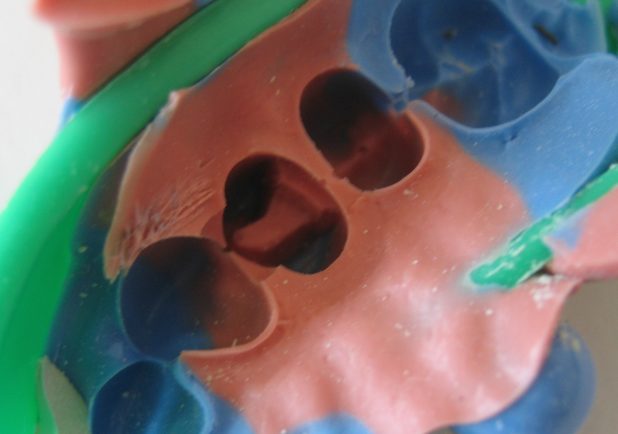While crowns are used to fix seriously damaged teeth and veneers are coatings with limited power to solve your chipped or damaged teeth, inlays and onlays lie somewhere between these two, but often take the best of the two worlds. These are as resistant and durable as a crown, which is no wonder – it is basically the same procedure as crowns, just the extent of the administering the material is different. Compared to veneers, aesthetic implications are actually the same, but the functionality is similar as well.
Inlays
Inlay is added to the area between the tooth cusps. Cusps are elevated tips on top of your teeth, between which the fillings are added. Most people will have an amalgam or white filling administered, but in some patients the tooth tip damage is so great that there’s not enough dental material to support a regular amalgam or composite filling. In these cases it is needed to apply greater amounts of reconstructive material to that location.
Modern inlays are made of composites or ceramic materials which are much thicker, more solid and resistant than amalgam or white regular fillings. There is no shrinking of inlay material while drying and hardening, which makes these particularly durable and efficient in solving the teeth deterioration issues.
Onlays
While inlays are applied to the central section of the tooth tip enclosed by the cusps, onlays are used in cases when one or more cusps (depending on the tooth) are chipped off, but not to an extent which would require a full length crown. You can assume that the condition which requires onlays is more severe than the one which is fixed with inlays. However, there are no major differences in treatment.
An onlay is basically restoration of all missing cusps on the teeth. An onlay is, thus an incomplete crown – the major difference is that it doesn’t cover the tooth fully to the gum line.
The Procedure
The procedure for both inlay and onlay treatment is less or more the same. It usually requires two appointments. At the first one, the dentist will prepare your tooth and develop a model of how your tooth would look. A moulded impression will be made to record the current state of your tooth, or multiple teeth if required.
After the first treatment, your new inaly or onlay is fabricated in the laboratory. Once it’s done you go for the second appointment when the dentist will place your inlays or onlays.
Materials used for these treatments are porcelain, composites and gold. So far, the gold is the best option whenever looks are not a concern, so it can be used on the back molars. For those teeth which appear on your smile, the best option is modern composite materials which are durable, functional and white.
